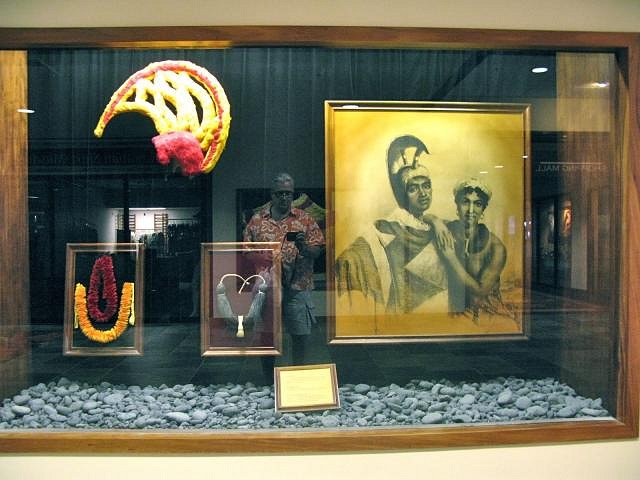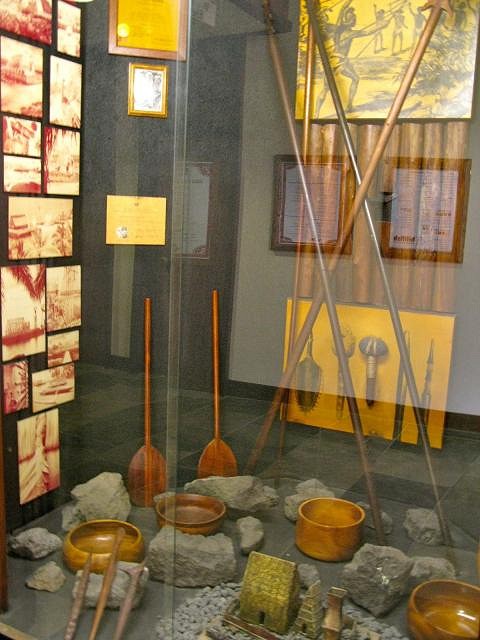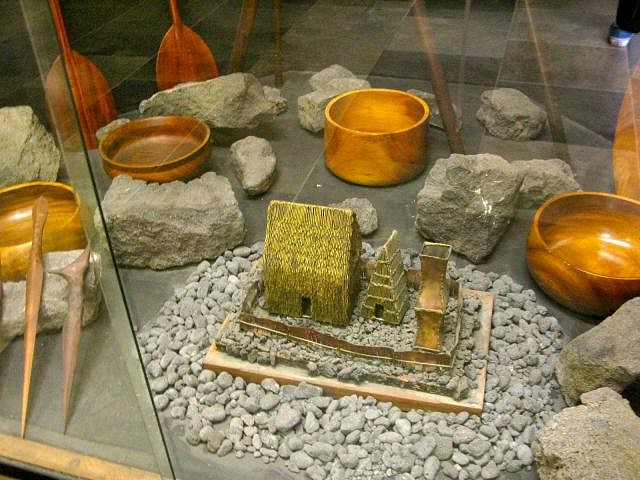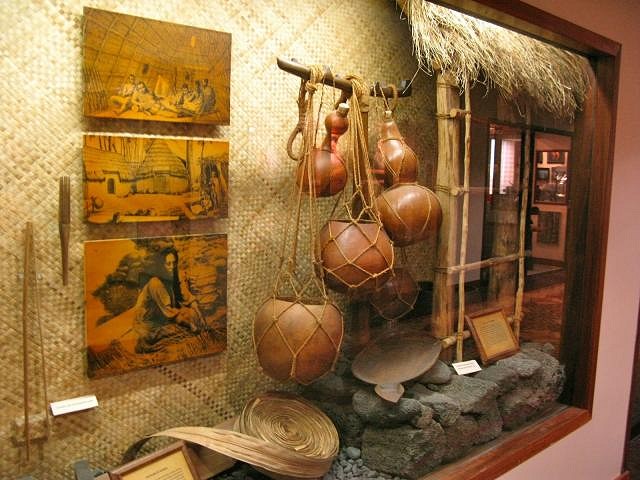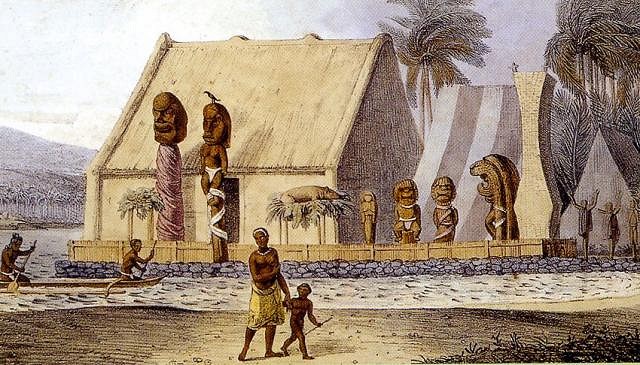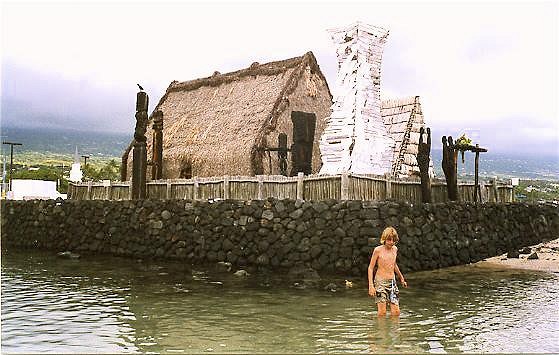Tiki Central / Locating Tiki / King Kamehameha Hotel, Kailua-Kona, HI (hotel)
Post #658568 by bigbrotiki on Mon, Nov 12, 2012 1:42 PM
|
B
bigbrotiki
Posted
posted
on
Mon, Nov 12, 2012 1:42 PM
Tom - Mahalo for the Herb Kane info and the Bob Van Dorpe connection. These people were true Polynesiacs, indeed. Another feature that endears the King Kam Hotel to me are the several museum-style display cases in its hallways on the ground floor that must have been there since it was built:
...this one has a model of the Ahu'ena Heiau in it:
This form of showcase is very un-modern, more like old Natural History Museums.
I wonder how they have escaped any renovation efforts. The guests and tourists don't seem to pay much attention to them. As a building, the hotel does not give any inkling of being a keeper of Hawaiian tradition. On the outside, it looks like a pretty unspectacular budget package hotel, like dozens of others on the islands. But the pop archeologist can find hidden treasures. Now back to the Ahu'ena heiau:
and when I first beheld its replica in the hotel lagoon (and photographed my son with it):
...I thought: 'How silly, they copied the bird on top of the Tiki in the rendering onto the actual carving!' From the book Ancient Sites of Hawai’i by Van James: “The name Aheu’ena means “hill of fire” or “red hot heap” and it is the site of a fifteenth century heiau luakini....The restored heiau has a hard hale mana (place of psiritual powers), a wicker lele (alter), an ‘anu’u tower and several wooden ki’i (carved figures). The carved image with the plover bird on its head is the god of war. A sacred drum called Apahou, decorated with human teeth, was housed here at Ahu”ene. Pigs, bananas, coconuts, and men were offered as sacrifices at luankini heiau. ” |

